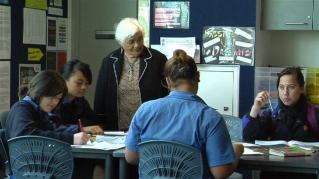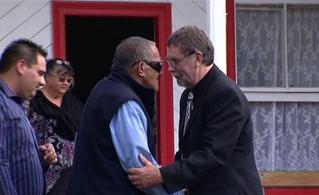Section navigation
The first step taken by Lincoln High School, a decile 9 school, was to examine the NCEA data. This was triggered by Russell Bishop's work; in particular, the student narrative component. The school’s data illustrated that Māori students were grossly underachieving. As a result, the professional development model of Te Kauhua was established, based on research that showed what works well for Māori. At the forefront were the principles of ‘ako’, ‘culture counts’ and ‘productive partnerships’. In the case of the latter, creating a partnership between whānau and educators, the school emphasised the importance of cooperation and two-way communication. Māori student achievement became a joint responsibility. As the new approach yielded positive results, teachers had more feelings of self efficacy/self-belief. Furthermore, there was validation of Māori language and culture.
Another beneficial initiative was for Lincoln High to establish a cluster with two other schools in close proximity, focussing on the 300 Māori students across the three schools. This gave teachers and heads of department the opportunity to get together and share successful strategies to help address differential achievement.
Questions / Things to think about / Activities
1. To support Ka Hikitia, the Ministry's Māori education strategy (which emphasises the importance of Māori students’ presence, engagement and achievement), how are we tracking Māori student data? Timperley et al (2003:11) assert that student achievement is improved in schools where teachers have learning conversations about achievement data. In addition, they claim that teachers become more reflective practitioners when they are ‘data-based inquirers’, looking at the impact of their practice on the students. How do we assess and analyse Māori student achievement?
2. How do we use the data that we collect? (Some uses of data are to formulate next teaching steps, report to parents, set departmental targets, and place students).
3. How is our school meeting the Ministry requirements (NZC p 37) to consult with the school's Māori community, and develop plans and targets for improving the achievement of Māori students?
4. How do/could we involve whānau in goal-setting for their children's achievement? How can we set out expectations of accountability, where each partner:
- has a degree of responsibility to ensure goals are met
- understands their role (in supporting students to achieve their goals)
- meets regularly with the other partner to discuss progress.
5. What is the role of the school leader in the data analysis process? For example, leaders need to understand how to use data. They also need to be able to lead data-based discussions with teachers, so that they can see data as a powerful tool. In light of adverse data about Māori student achievement, what are our school leaders doing to get us to work together to improve the situation, by collecting and analysing relevant data?
6. Ka Hikitia identifies Māori language education as an area of vulnerability for Māori students. How do we ensure that Māori students are able to access te reo Māori as an option? How can we show that we value te reo Māori? What ways are there for us to support the Māori language teacher/s in our school, so that they in turn can enhance the quality of teaching and learning in their classrooms? Some examples could be getting them to focus on curriculum goals; providing requisite resources; and ensuring appropriate teaching methods and assessment practices.
7. What would we see/feel in a classroom where power is shared, and where it is obvious that culture counts?
8. In what ways does our school make Māori students feel proud of their Māori language and culture?
Filed under: Productive partnerships | Ako | Effective teachers





